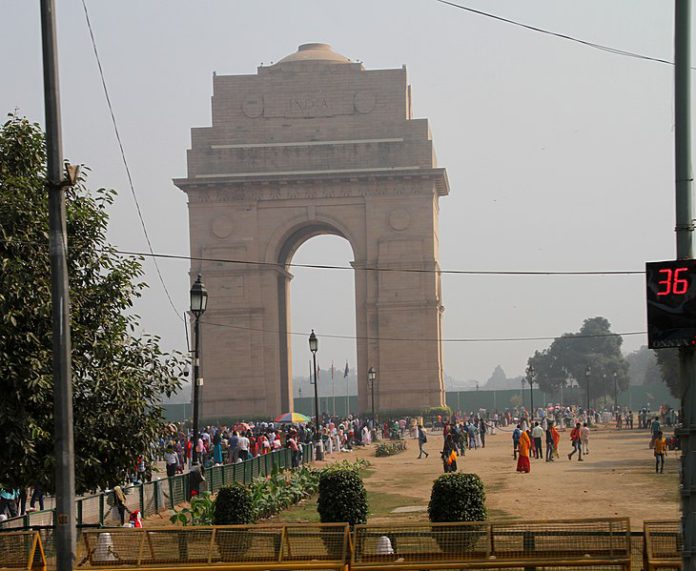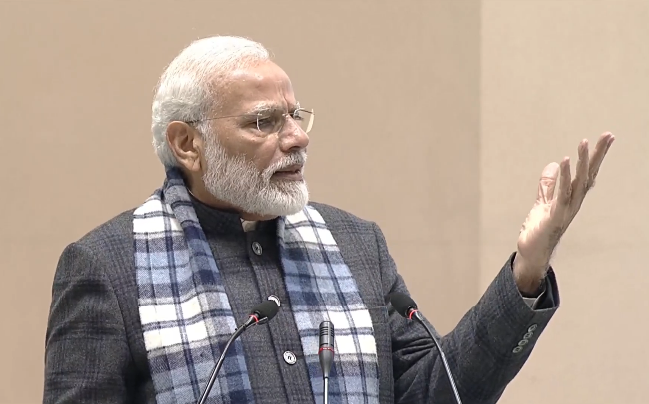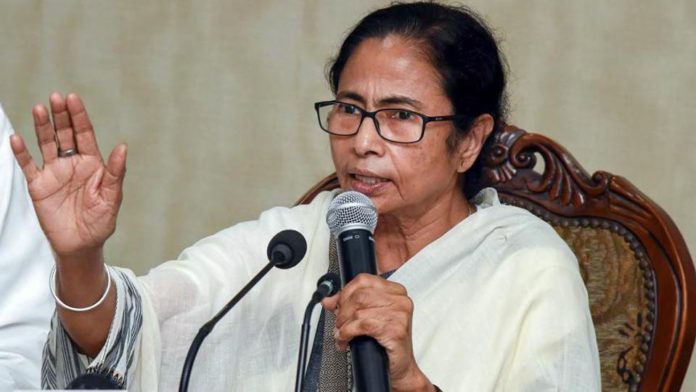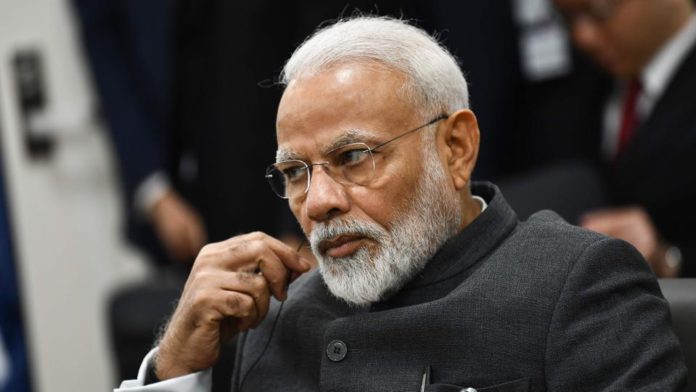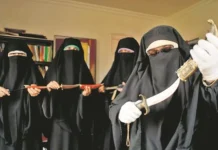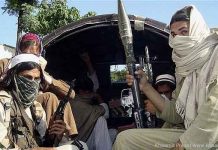Slight rise in temperature in Delhi
Three militants killed in Kashmir gunfight
Mubashir Bukhari
Tral (Kashmir) NVI: Three militants were killed today in an encounter with security forces in Tral area of south Kashmir.
Acting on specific inputs, security forces launched a cordon and search operation in Gulshanpora area of Tral on Sunday morning.
During search operations, the militants fired at forces triggering encounter in which two militants were killed, police said.
The identity of the killed militants is yet to be ascertained as exchange of fire was going on when this report was filed.
CAA will not harm anyone: PM
Howrah (NVI): Prime Minister Narendra Modi today said that the newly amended Citizenship law (CAA) is not about taking away citizenship but granting it.
He was addressing a gathering of students and youths at Belur Math in Howrah on the occasion of birth anniversary of Swami Vivekananda.
The prime minister is on a two day visit to West Bengal. He also met Bengal Chief Minister Mamata Banerjee yesterday.
While addressing students today he said that some political parties deliberately don’t want to understand the new law.
Military delegation’s China visit paves way for collaboration: Army
Udhampur (NVI): The five-day visit to China by Indian military delegation, led by Northern Army Commander Lt Gen Ranbir Singh, is expected to enhance cooperation in defence sector and furtherance of peace at borders, the Army said today.
Army spokesperson here said the visit was successful and paves way for future collaboration.
The delegation arrived in China on January 7 and carried out extensive interaction with the top officers and troops of Peoples Liberation Army’s (PLA’s) Western Theatre Command which oversees the Northern Borders along Line of Actual Control (LAC), the spokesperson said.
On January 7, Lt Gen Singh met the Commander of Peoples Liberation Army, General Han Weiguo in Beijing.
The five-day visit to China by Indian military delegation, led by Northern Army Commander Lt Gen Ranbir Singh, is expected to enhance cooperation in defence sector and furtherance of peace at borders, the Army said today.
Army spokesperson here said the visit was successful and paves way for future collaboration.
The delegation arrived in China on January 7 and carried out extensive interaction with the top officers and troops of Peoples Liberation Army’s (PLA’s) Western Theatre Command which oversees the Northern Borders along Line of Actual Control (LAC), the spokesperson said.
On January 7, Lt Gen Singh met the Commander of Peoples Liberation Army, General Han Weiguo in Beijing.
The Northern Army Commander proceeded to China’s Western Theatre Command at Chengdu on Januray 8, where ceremonial welcome was accorded to the general by a guard of honour.
Later he visited PLA’s Western Theatre Command Headquarters and held talks with General Zhao Zongqi, the Commander of Western Theatre Command on key issues concerning Indian Northern Borders.
Lt Gen Singh, along with his delegation, also visited a special Operations Brigade at Chengdu where they witnessed a counter-terrorism drill.
On January 9, he visited the Combined Brigade under 77 Group Army and later interacted with Lt General Liu Wanglong, Commander Xinjiang Military Command. Lt Gen Singh visited 9 Engineer Regiment of Xinjiang Military Command and interacted with Chinese troops, on January 10.
During talks with the Chinese Military officials, the delegation discussed a host of issues including border area management, improved bilateral military ties and defence cooperation activities as part of the celebrations of the 70th anniversary of the establishment of diplomatic ties between India and China.
The visit is considered significant as the composition of the delegation, schedule of the visit and interactions carried out were orchestrated in a progressive manner to achieve better understanding and build up of positive perceptions about key concerns faced at operational and functional levels, the spokesperson said.
This was the first high-level military-to-military engagement in 2020 between India and China. It comes just after the joint military exercise, ‘Hand in Hand 2019’ held between the two armies in Meghalaya in December 2019.
WATCH | Maiden landing of naval version of Tejas on aircraft carrier
New Delhi (NVI): In a significant step towards India developing its own deck-based fighter jets, a naval variant of light combat aircraft Tejas landed successfully on the country’s only aircraft carrier INS Vikramaditya, on January 11.
The aircraft, developed by DRDO did a successful ‘arrested landing’ on INS Vikramaditya at around 10 am Saturday. This is the second successful arrested landing of an LCA after a similar operation at a shore-based test facility in Goa last September.
Forest cover of J&K has shown increase
Jammu(NVI): The forest cover in erstwhile Jammu and Kashmir state, which included Ladakh, has increased by 371 sq kms, according to the latest India State of Forest Report (ISFR) 2019.
The state of Jammu and Kashmir was bifurcated into 2 Union Territories — Jammu and Kashmir Union Territory and Ladakh Union Territory — in August last year.
Jammu and Kashmir managed to be among the top five states/UTs that have registered maximum increase in forest cover during the last two years.
The state/UTs showing significant gain in forest cover are Karnataka (1,025 sq km), Andhra Pradesh (990 sq km), Kerala (823 sq km) and J&K (371 sq km including 348 sq km in UT of J&K and 23 sq km in Ladakh UT).
The report further said that the forests of J&K have recorded the highest growing stock of wood per unit area, which is 144.16 cubic meter per hectare.
The total carbon stock of forests in UTs including ‘Trees outside Forests’ is 390.20 million tonnes (1430.73 million tonnes of CO2 equivalent), which is 5.48 percent of the total forest carbon of the country.
ISFR-2019 revealed that the extent of forest cover and the trees outside the forests in UT of Jammu and Kashmir is 29,066 sq km, which is 55 percent of the total geographical area of UT of J&K.
A total of 42 forest types are found in the Union Territories of J&K and Ladakh, which are highest in the country and denotes the diversity of forest ecosystems in J&K.
The two UTs have so far notified 15,912 sq km under the Protection Area Network (PAN) which is 15.59% of the total geographical area of the combined UT, comprising five National Parks, 14 Wildlife Sanctuaries and 35 Conservation & Wetland Reserves.
The FSI report said that the Protected Area (PA) network of the two UTs is the highest in the country in terms of area, which is nearly 10 percent of the country’s PA network.
Jammu and Kashmir has recorded the highest diversity of herbs in the country.
The last study had shown that in J&K the area under very dense forest cover had grown by 14 sq km only which now has grown by 206 sq km which shows that area under very dense forest cover has increased the maximum.
In tune with the Government of India’s vision of Digital India, FSI’s assessment is largely based on digital data whether it is satellite data, vector boundaries of districts or data processing of field measurements.
In this report, Ortho-rectified LISS III satellite data has been used for forest cover mapping due to its better positional accuracy as it removes effects of image perspective (tilt) and relief (terrain) and scale distortions in the image to represent features in its true positions for accurate measurement of distances, angels and areas.
The forest cover assessment reflects, in general, the status of forests in the country and its trend and provides inputs for broad evaluation of the forests related policies, legislations, programs and activities in the country.
The department of Forests is making continuous efforts to enhance quality of forest cover and improve ecosystem services from forest lands, including moderately dense forest cover, open forest cover and degraded grasslands, an official spokesman said here today.
The increase in the forest cover recorded by the FSI Report is the outcome of consistent reforestation efforts including mega plantation drives by the department and effective implementation of Forest related schemes, the spokesman said.
The afforestation activities are being promoted at every level by utilization of CAMPA funds and with improved techniques in challenging environment.
The way Forest Department is moving ahead, hopefully the ISFR report that is to be prepared in 2021 would see further increase in forest cover in the Union Territory of J&K, the spokesman said.
Huge bamboo reserves in J&K can boost its economy: Jitendra Singh
Jammu (NVI): Jammu and Kashmir has huge bamboo reserves and it can boost the economy of the Union territory, Union Minister Jitendra Singh said today.
While inaugurating a workshop-cum-exhibition on “Bamboo-A wonder grass” at Convention Centre, here today, Singh said the bamboo cultivation can revolutionise the industry in a cost-effective manner and open new gates for young start-ups.
During the workshop-cum-exhibition, the Union minister also inaugurated bamboo and cane cluster stalls established by eight states of North Eastern Region and exhibition stalls. He also visited live stations established by various departments of the UT of Jammu and Kashmir.
Expressing his views on a series of workshops and conferences being organised in J&K, the minister said this was the fourth conference within a short span of three months.
Also present on the occasion, J&K Lieutenant GC Murmu said, “bamboo being eco-friendly can help us saving the environment from pollution and can become a means of livelihood as well.” He added that need of the hour is to find the economic use of the “wonder grass” in Jammu and Kashmir as the UT has its huge reserves.
Mamata meets PM Modi
Kolkata (NVI): West Bengal Chief Minister Mamata Banerjee today met Prime Minister Narendra Modi at Raj Bhawan here.
Modi is here on a two-day visit from today for official engagements.
After the meeting, Banerjee said she met the Prime Minister regarding some financial demands.
She added that during the meeting, she conveyed to the Prime Minister her opposition to CAA, NRC and NPR and demanded their withdrawal.
Naval version of Tejas makes successful maiden landing on aircraft carrier
In a significant step towards India developing its own deck-based fighter jets, a naval variant of light combat aircraft Tejas today landed successfully on the country’s only aircraft carrier INS Vikramaditya.
The aircraft, developed by DRDO did a successful ‘arrested landing’ on INS Vikramaditya at around 10 am today. This is the second successful arrested landing of an LCA after a similar operation at a shore-based test facility in Goa last September.
INS Vikramaditya, which is currently deployed in the Arabian Sea has the naval version of the MiG 29 on board. The carrier has a capacity for 30 aircraft.
Defence minister Rajnath Singh congratulated the DRDO and the Indian Navy after the successful test.
PM condoles loss of lives in UP bus accident
New Delhi (NVI): Prime Minister Narendra Modi today condoled the loss of lives due to a road accident in Kannauj, Uttar Pradesh. At least 20 people were killed when a bus collided with a truck in the area yesterday.
A massive fire broke out when a collision between a private sleeper bus and a truck near Chiloi village under Chhibramau police station.
Union Home Minister Amit Shah also took to Twitter to offer his condolences to the families of the deceased and called it a “horrific accident”.
Congress leader Rahul Gandhi also send his condolences to the families of the deceased and hoped for a speedy recovery of the injured.
Uttar Pradesh Chief Minister Yogi Adityanath also rushed to the spot on Friday night and sought a report on the incident. The UP CM has announced an ex-gratia of Rs 2 lakh to the next of kin of those who lost their lives and Rs 50,000 to the injured.

